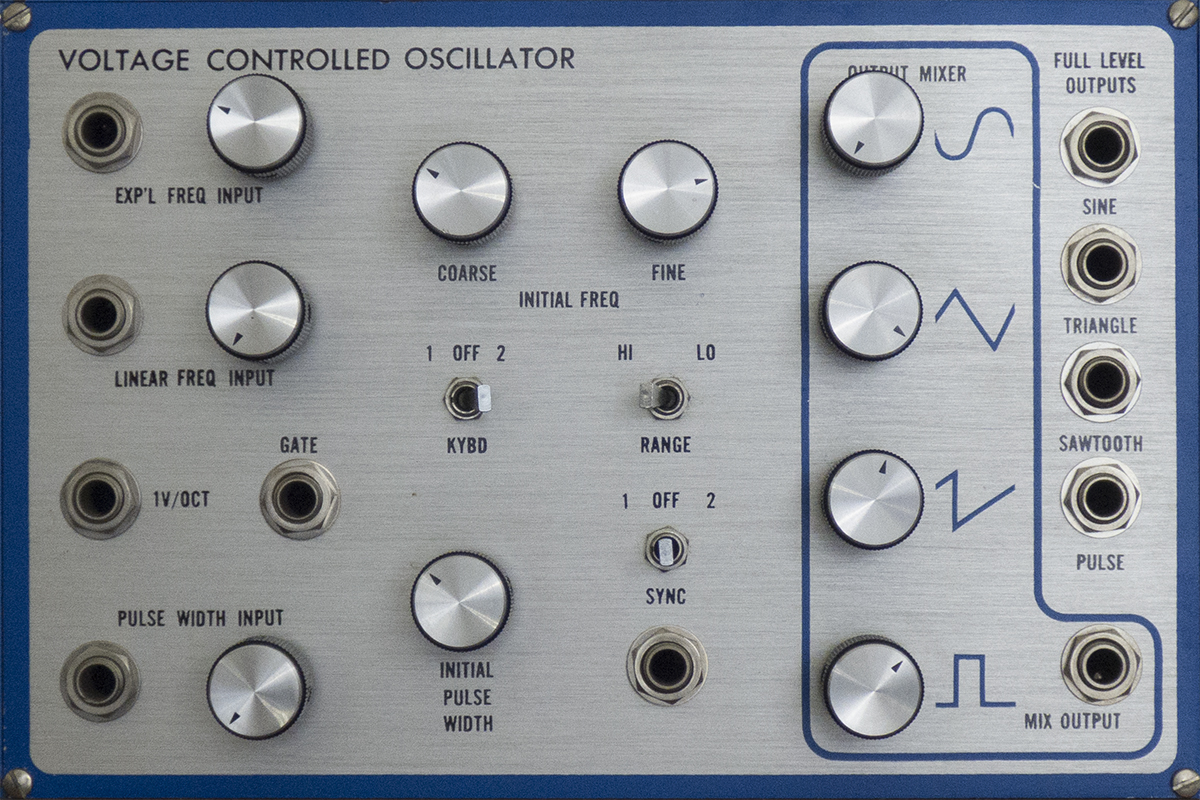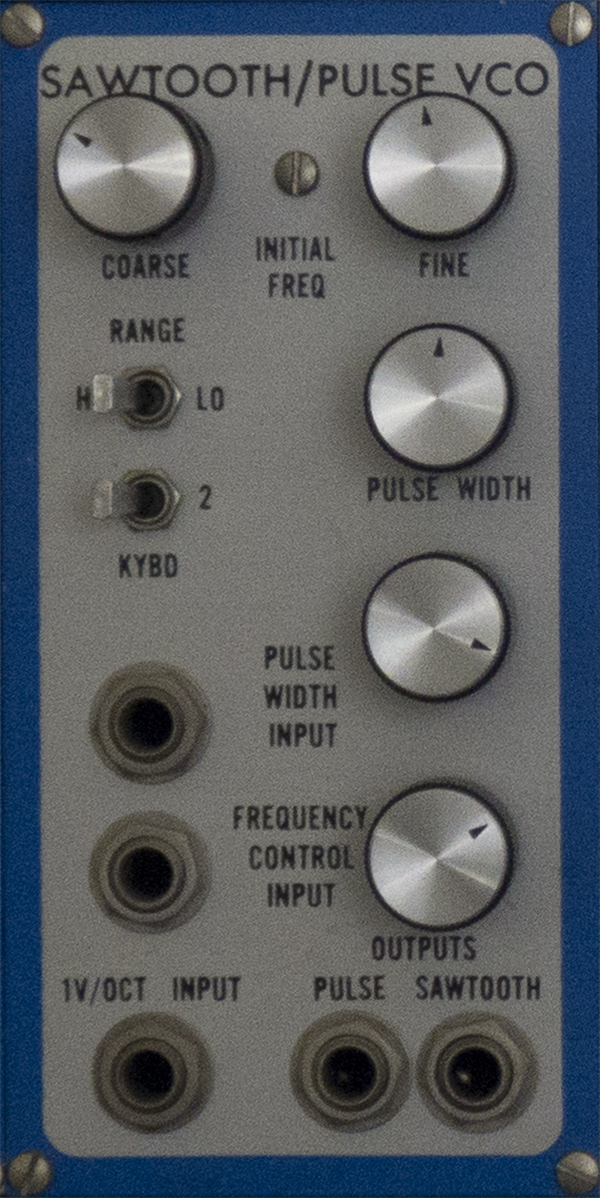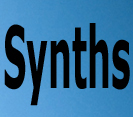THE E-MU MODULAR
E-mu Oscillators
E-mu Modular Technical Information |
AdditionalInformation |
E-mu Modular System 2017 |
|
Main Page |
1977 Modular Brochure |
E-mu Modular System Keyboard |
|
- > Voltage Controlled Oscillators |
Other Modules |
More Modular Pictures |
E-mu Modular System Modules |
Voltage Controlled Amplifiers |
Modular Cabinets |
Rossum Interview |
E-mu Modular System Inside |
Voltage Controlled Filters |
E-mu SSM Board |
E-mu Modular System Sounds |
Click on a section above to go to a specific area about the E-MU Modular.
Eµ MODULE 2200 - VOLTAGE CONTROLLED OSCILLATOR |
 |
Eµ MODULE 2200 - VOLTAGE CONTROLLED OSCILLATORThe Eµ 2200 Voltage Controlled Oscillator is a complete, four waveform, exponentially and linearly controlled oscillator with an output mixer. It is exceptionally stable and accurate for use with full size synthesizer keyboards. It contains an Eµ 1201 VCO submodule, and an Eµ 1210 wave converter submodule. The upper three inputs are for frequency control. The uppermost is attenuable from 1 volt per octave with exponential response; the center has AC coupled linear response with a maximum sensitivity of 20% per volt. The lowest input responds exponentially at precisely lV/octave. The keyboard switch will instantly connect either of two keyboards at exactly lV/octave. The oscillator's initial frequency can be adjusted by the coarse control over more than ten octaves, while the fine adjustment with its four semitone range allows precise tuning. The range switch shifts the oscillator initial frequency down ten octaves. The frequency can be swept, however, over the entire twenty octave range from 0.03Hz to 30KHz. The pulse width control and the pulse width modulation input vary the duty cycle of the pulse waveform from 0% to 100%. Maximum sensitivity is 10%/volt. The four upper output jacks give each of the waveforms at full level (lOV peak-to-peak for sine, triangle, and pulse, 0 to +5V for sawtooth). The waveforms are phased as shown on the panel; the falling edge of the pulse waveform is varied by the pulse width voltage. The output mixer enables the creation of waveforms with infinitely variable harmonic content. The mixer is inverting, allowing the oscillator to simultaneously produce any output waveform and its inverse for control purposes. The sync switch allows phase-locking any oscillators in the system. Oscillators tuned to whole number ratios will lock if their sync switches connect them to the same sync bus. The range of pull is slightly less than a semi tone. The sync input will force the sawtooth to discharge, taking the other waveforms to their analogous locations, when a rapidly falling edge is applied. The gate input synchronously turns the oscillator off when the input exceeds about +2.5V. As long as the high level is maintained, the sawtooth is not allowed to discharge, and rests slightly above +5 volts. As soon as the gate input is brought low, the discharge occurs, and the oscillator runs again. The gating and sync input features are not only useful in control oscillators at subaudio frequencies, but also produce interesting timbres when both the controlling and sync'd or gated oscillators are run at audio rates. Power Requirements:±15 V @ 50 mA typical +5 V @ 10 mA typical Firm-wire Patch Connections: Inputs: Frequency Control (2), Pulse Width Modulation Outputs: Sine (3 pins), Sine (3 pins) Triangle (3 pins), Sawtooth (3 pins) Pulse (3 pins), Mixer (3 pins) Power Bus Connected Inputs: Keyboard CV's 1 & 2 & Sync Busses 1 & 2
Adjustments: V/octave sensitivity Sine Distortion Sine Offset Sine Gain Triangle Symmetry Triangle Offset Triangle Gain |
Eµ MODULE 2210 - SAWTOOTH/PULSE VCO |
 |
Eµ MODULE 2210 - SAWTOOTH/PULSE VCOThe Eµ 2210 Sawtooth/Pulse VCO is a two waveform exponentially voltage controlled oscillator with many of the features of our 2200 VCO. It contains the stable and accurate 1201 VCO submodule. The oscillator's frequency is determined by the sum of the settings of the coarse and fine initial frequency controls and any frequency control inputs. Control voltages may be applied from either of 2 keyboards via the keyboard switch, through the precision lV/octave input, or through the attenuated frequency control input. As with the 2200, switching to low range lowers the frequency ten octaves, but the entire 20 octave range may be continuously swept. The pulse width control and the pulse width modulation input are summed and vary the duty cycle of the pulse waveform from 0% to 100%, with a maximum sensitivity of 10%/volt. The phase relationship between sawtooth and pulse is the same as in the 2200: the pulse rises as the sawtooth falls, and the pulse falling edge location is controlled by pulse width modulation.
Power Requirements: ±15 V @ 30 mA typical, +5 V @ 60 mA typical Firm-wire Patch Connections: Inputs: Frequency Control (2) Pulse Width Modulation Outputs: Sawtooth (3 pins) Pulse (3 pins)
Power Bus Connected Inputs: Keyboard CV's 1 & 2 Adjustments: V/octave sensitivity more |
Silicon Breakdown has been a source of free information and pictures for analog synthesizers since 1999
The Music side of this site contains the sounds of Silicon Breakdown and various other musical adventures. MUSIC HERE
The Synth side showcases beautiful instruments from the past. ANALOG SYNTHESIZER INFO HERE
send comments to james AT siliconbreakdown.com (replace AT with @)



